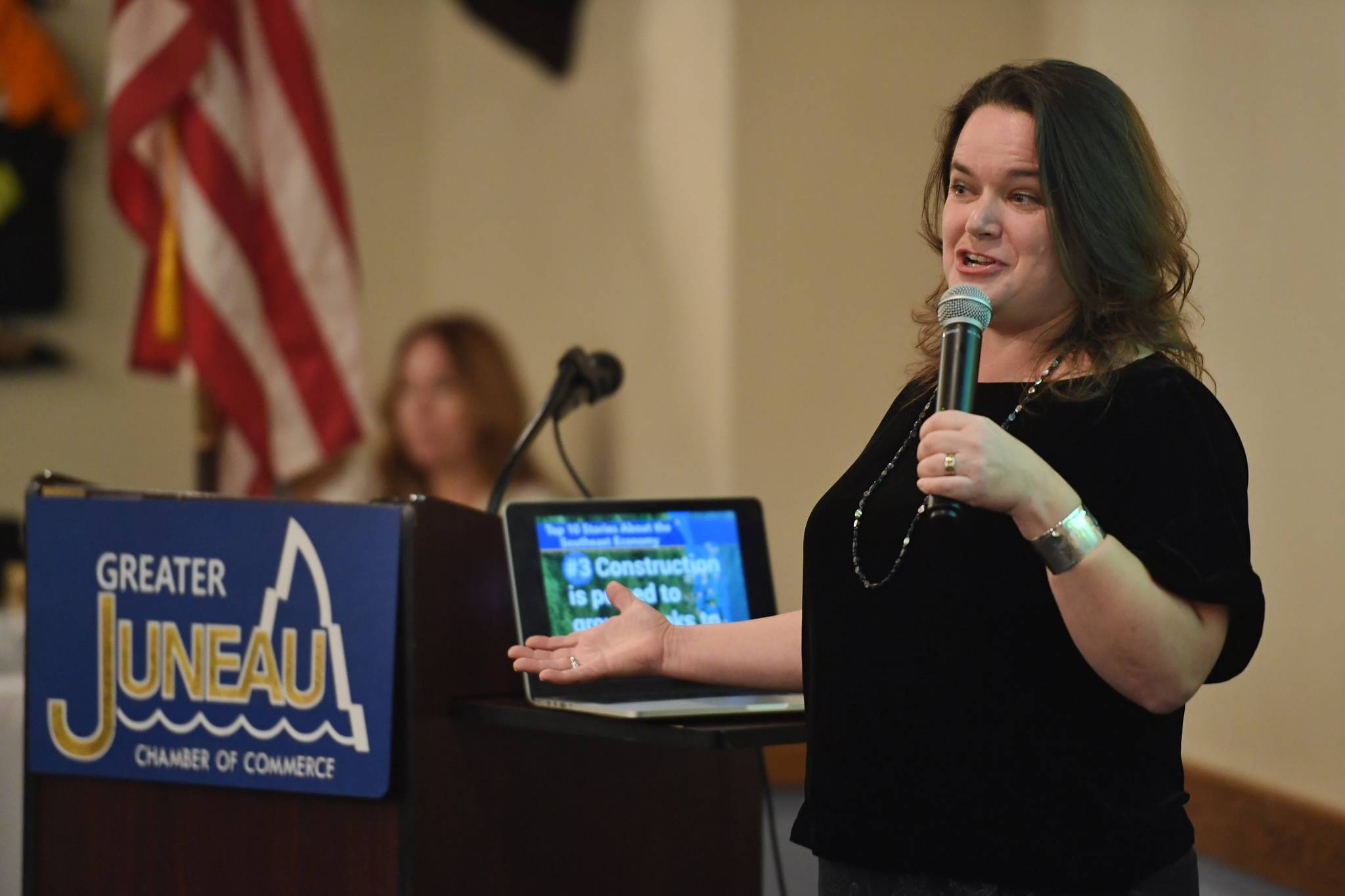Summary: Despite growth being flat in Southeast, the economy is stable. But there is uncertainty surrounding the financial future concerning the state and federal governments. Read the full story here: Economic outlook for Southeast a mixed bag
12:50 p.m.
The trade war with China has adversely affected Alaska’s natural resource industries.
“Drought that we’ve been experiencing is really hurtful to some of our communities,” she says, as well as a “marine heatwave” which has affected the seafood industry.
12:45 p.m.
“Most of our industries are flat,” Schijvens says. Southeast Alaska added only two jobs last year, in terms of total net job growth.
Education helps balance out the seasonality of the Southeast economy. Industries like tourism and fishing peak in the summer, while education jobs peak in the winter.
“Southeast Alaska is getting put on the map as a culinary destination,” she says.
Forty-two percent of businesses are in the tourism industry are hiring jobs in the next 12 months.
12:40 p.m.
“We need more health care workers in Southeast Alaska.”
There’s a lot of competition for health care workers in the U.S., Schijvens says, which means that employers use higher compensation to draw workers here, but that raises the cost of health care.
The No. 2 reason people leave their jobs in Southeast is lack of child care, No. 1 is cost of living.
12:35 p.m.
“Construction is set to grow, but actually that’s another tourism story,” Schijvens says. Tourism industry infrastructure has a number of projects either in process or planned throughout Southeast.
But state jobs losses are continuing. Oil peaked in the 1980s, she says, and those prices bolstered government jobs but the price of oil fell in 2016.
Alaska is the 6th largest oil producing state. “Our relationship with oil is changing,” she says.
The permanent fund is now more important to the state budget than oil and all other taxes combined.
12:30 p.m.
Schijvens takes the stage to explain the data presented in the By the Numbers report. Job growth, “is about as flat as it can be,” she says. But wage growth has been up, driven by health care and tourism jobs, which are paying more.
Visitor industry jobs make up 18 percent of the jobs in Southeast Alaska, she says, and make up 11 percent of the wages.
Projections for 2020 show that Juneau will receive the most cruise ship visitors with 1.4 million visitors. Cruise ship passengers make up 90 percent of all tourists to Southeast, she says.
The average annual cruise ship visitor increase has been 4.4 percent over 20 years, according to her data.
12:20 p.m.
Venables takes the stage after introductions by the Chamber. He is joined by Meilani Schijvens of Rain Coast Data.
“We’re known for our support of the Alaska Marine Highway System,” he says. The cornerstone of every industry is energy and transportation, he said. “The wealth of our state is all around us,” Venables said, referring to the state’s natural resources.
12:15 p.m
Southeast Conference Executive Director Robert Venables is speaking at this week’s Juneau Chamber of Commerce Luncheon at the Moose Family Lodge. Venables is speaking about the Conference’s annual report, “Southeast Alaska By the Numbers.”
The report details the economic outlook for Southeast Alaska over the past year.
Southeast Conference is a regional economic development organizations and seeks to promote economic activities in Southeast Alaska.
• Contact reporter Peter Segall at 523-2228 or psegall@juneauempire.com.

